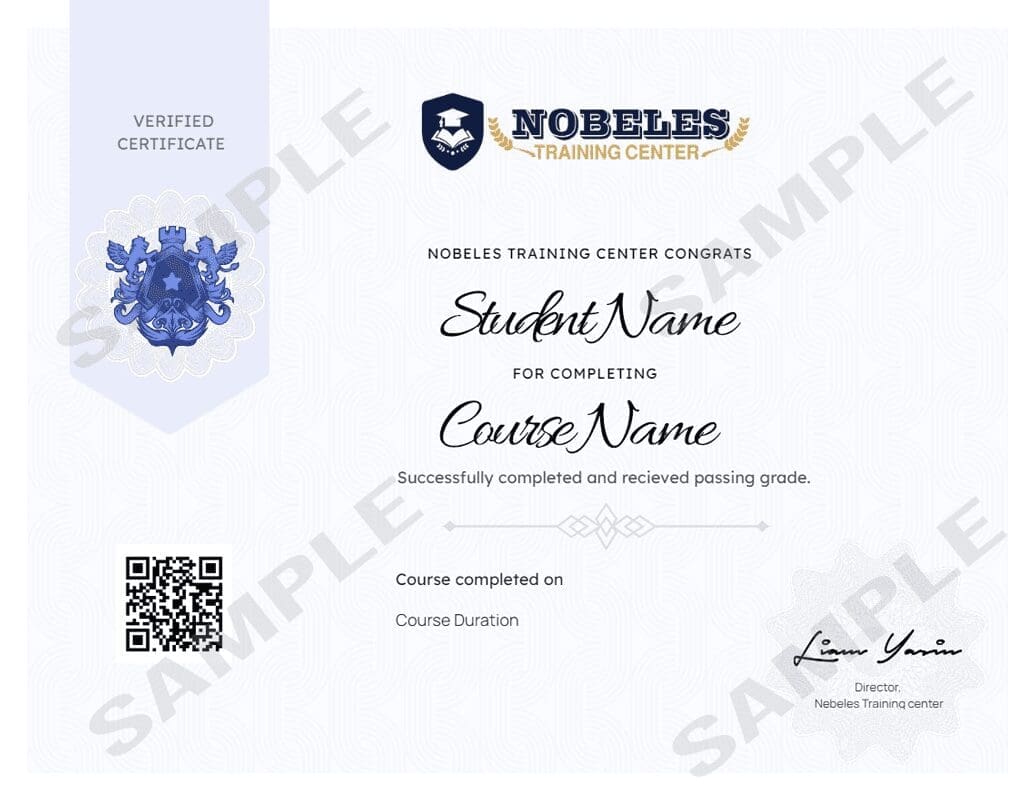Description
Curriculum
Instructor
The ability to interpret body language is a skill that will enhance anyone’s career. Body language is a form of communication, and it needs to be practiced like any other form of communication. Whether in sales or management, it is essential to understand the body language of others and exactly what your own body is communicating.
Please enter your name and email to view the content:
Curriculum
- 11 Sections
- 11 Lessons
- 10 Hours
Expand all sectionsCollapse all sections
- Communicating with Body LanguageCommunicating with body language involves using non-verbal cues like gestures, posture, and facial expressions to convey emotions and messages. It enhances verbal communication, builds rapport, and helps interpret others' feelings effectively.1
- Reading Body LanguageReading body language involves interpreting non-verbal signals such as posture, gestures, eye contact, and facial expressions. This skill enhances understanding of emotions and intentions, facilitating better communication and relationship-building.1
- Body Language MistakesCommon body language mistakes include poor posture, lack of eye contact, crossing arms, and inconsistent facial expressions. These can mislead communication, create misunderstandings, and negatively impact interpersonal relationships and perceptions.1
- Gender DifferencesGender differences in body language often manifest in communication styles and non-verbal cues. Men may display more assertive gestures, while women often use more expressive facial expressions, affecting interpretation and interactions.1
- Nonverbal CommunicationNonverbal communication encompasses body language, facial expressions, gestures, and posture that convey messages without words. It enhances verbal communication, expresses emotions, and plays a crucial role in understanding and building relationships.1
- Facial ExpressionsFacial expressions are vital components of nonverbal communication, conveying emotions like happiness, anger, surprise, and sadness. They enhance interactions, provide emotional context, and help interpret messages beyond spoken words effectively.1
- Body Language in BusinessBody language in business significantly impacts communication, negotiations, and relationships. Effective use of gestures, posture, and eye contact can convey confidence, openness, and engagement, enhancing professionalism and fostering positive interactions.1
- Lying and Body LanguageLying and body language often exhibit incongruence between verbal statements and non-verbal cues. Signs of deception may include inconsistent facial expressions, avoiding eye contact, fidgeting, and defensive postures, aiding in detecting untruthfulness.1
- Improve Your Body LanguageImproving your body language involves practicing good posture, maintaining eye contact, using open gestures, and being aware of facial expressions. Consistent self-awareness enhances communication, builds confidence, and fosters positive interpersonal connections.1
- Matching Your Words to Your MovementMatching your words to your movement involves ensuring that body language aligns with verbal communication. This consistency reinforces messages, enhances credibility, and fosters trust, creating a more authentic and engaging interaction.1
- Post-TestPost-Test1
Nobles Center

5 Students146 Courses
Review
$295.00
413 students
11 lessons
Language: English
0 quiz
Assessments: Yes
Skill level All levels
Nobles Certificate
At the end of the course, you can download a copy of your certified certificate.
Nobeles Academy
Mobile Application
Download the Nobeles center mobile app from the app app store, click the button below


